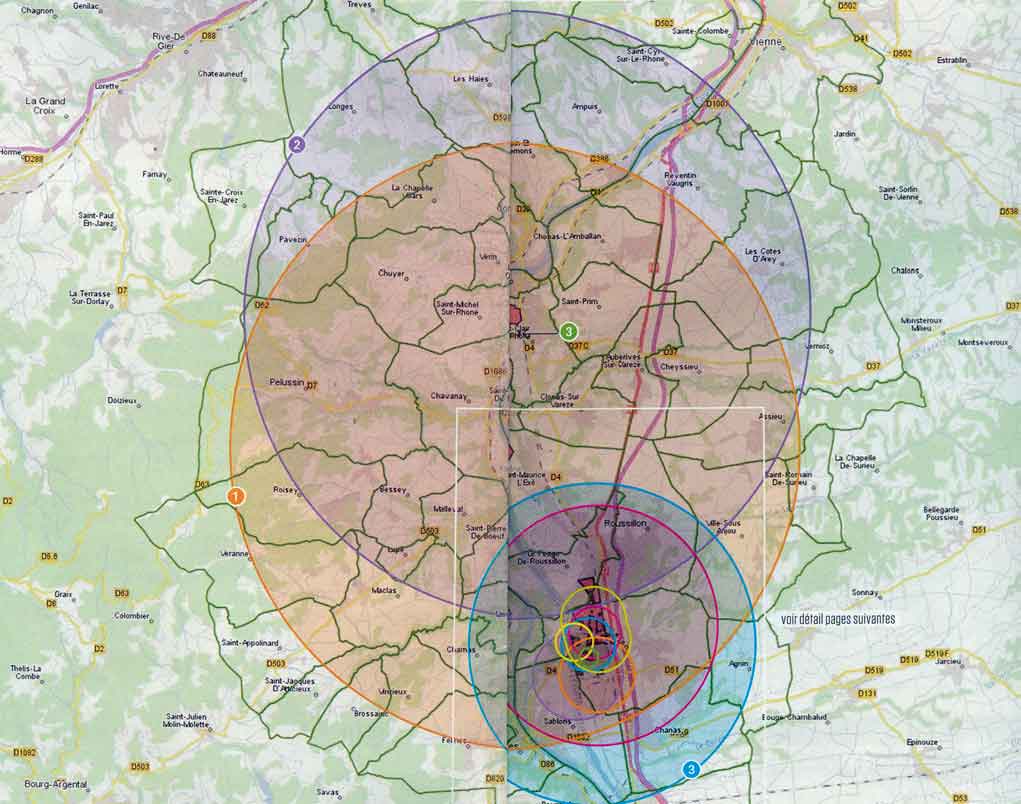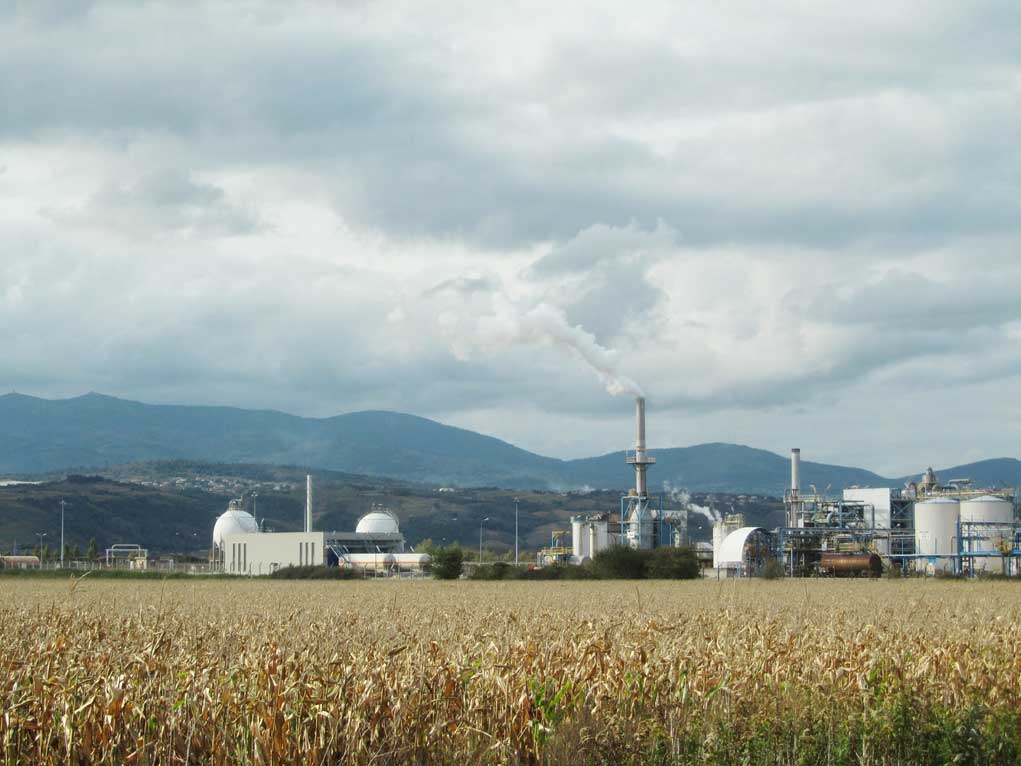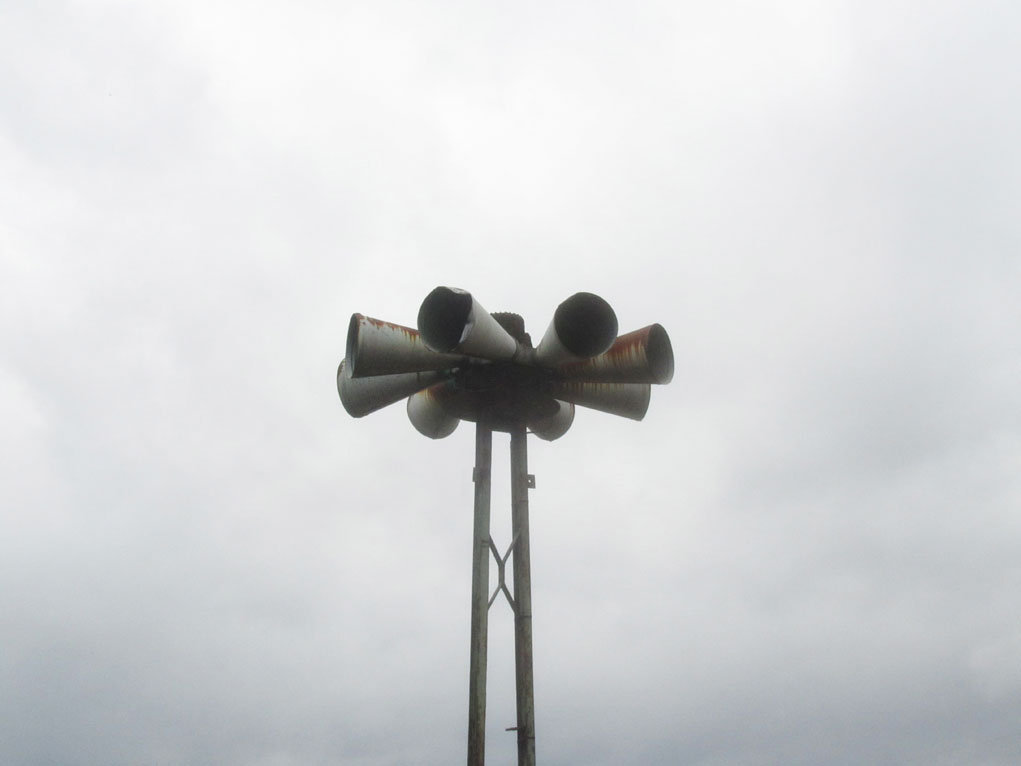2013
> Project GAP – Global Art Programme, Waiting for Expo 2015, promoted by Artegiovane Milano and coordinated by FARE, in collaboration with Art3 Valence, in residence at Moly-Sabata, Sablons (FR). October-December 2013

Sablons, Rhone-Alpes, an area along the Rhone with a high concentration of industries and storage facilities for highly dangerous chemicals, waste incinerators and nuclear power plants. Each family living in this area is given a leaflet on the major industrial risks in the area, with all the information about the companies, the dangers and what to do in the event of an accident. The risk areas are circumscribed on a map with a radius in kilometres from the industrial centre, as coloured circles marking the limits of non-hazard. Sablons is located within three circles, blue, orange and fuchsia, and very close to seven others.

Cosa significa “rischio”? Quale importanza dare, per la nostra vita, a qualcosa che le istituzioni stesse, pur accettandolo e promuovendolo per lo “sviluppo” del territorio e della società, ci presentano come “rischioso”?
I found some meaningful words by Roland Desbordes, President of CRIIRAD (Commission de Recherche et d’Information Indépendantes sur la Radioactivité), a study and information centre set up in 1986 following the Chernobyl nuclear accident.
There are rules but they are impressive in terms of health, i.e. the dose limit of one
millisievert per year is not the limit of no risk but the limit of acceptable risk. It means that
above the line there is an unacceptable risk and below it is not that the risk does not exist, it is only
acceptable. This is written in the official texts.
For ordinary people acceptable means no deaths, no health impacts, but this is not the case.
that is not the case. Acceptable actually means a certain number of deaths per thousand inhabitants related to the risk of power stations, waste or uranium mines, it is an economic criterion in function
of interests versus health damage. But it is clear that this is not a democratic choice, it is a choice
of experts who have managed to make people believe that the limit is the limit of no risk, and this is
totally false. (From L’inganno, an Report (RAI) investigation aired on 29-03-2009).
This ambiguity is symptomatic of an industrial and economic system that has already demonstrated important environmental limits, which also affect agriculture and the food industry.



I worked by looking at industrial agriculture as a practice with a strong environmental impact, talking with Jeane-Claude Girardin, a former seller of chemical plant protection products for agriculture (who now chairs an ecologist association to ‘save our future’), rereading the Degrowth Theory proposed by Serge Latouche, recovering some principles of Biodynamic Agriculture on the need to maintain the living, and living together with a small snail found in the salad.
Da questa ricerca è nata la mostra Risque Acceptable, composta da tre lavori, un piccolo catalogo e un libretto in edizione limitata.
Tavolo la cucina con lumaca ragionando sui limiti